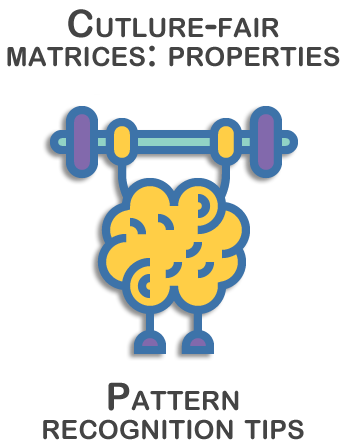Matrices: properties

- Learn which properties are associated with which items, zones, and actions.
- Item sets and number sequences are the properties that are more likely to appear in questions.
- Gaining familiarity with common properties leads to faster solutions and dissolves some of the complexity of more difficult questions.
